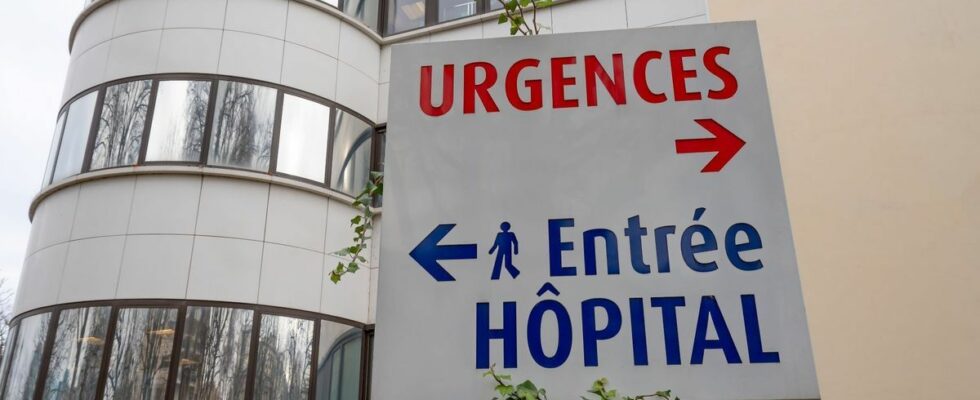Published on
Updated
Reading 3 min.
in collaboration with
Dr Gérald Kierzek (Medical Director)
A first heatwave episode begins across France. With temperatures sometimes exceeding 40°C, anyone can be a victim of heatstroke. To treat victims, AP-HP hospitals have equipped themselves with a new tool. Dr. Gérald Kierzek, emergency physician, tells us more.
With temperatures hovering around or exceeding 40°C, the heatwave that is settling across France promises to be intense. Olympic athletes, but also the general population, could then be victims of heatstroke. Paris hospitals have equipped themselves with a new tool to treat victims.
What are the different types of heat stroke?
A distinction is made between classic heatstroke and exercise-induced heatstroke. Classic heatstroke occurs outside of any exertion, during summer heat waves or in abnormally hot environments. It generally affects young children and seniors.
Exertional heat stroke occurs during intense or prolonged muscular effort and can therefore affect athletes at these Games.Exertional heat stroke is the association of neurological symptoms (convulsion, agitation, delirium, impaired consciousness, etc.) in the context of intense physical effort and hyperthermia body temperature above 40°C, the presence of which is encouraged (but not always) by a humid and warm atmosphere” explains Dr. Gérald Kierzek, emergency physician and medical director of Doctissimo.
“Its mortality approaches 10% and reaches 33% if an initial state of shock is present. Mortality is directly correlated to the duration of hyperthermia, hence the main objective: to bring the body temperature down quickly.”
“Cooling begins with removing the patient from the environment and undressing him.” adds the doctor. Then once taken care of by the doctors, it is possible to proceed with immersion in an ice water bath. For this, the emergency services of the AP-HP are equipped with individual bathtubs, ice machines and rectal monitoring probes.
“Cooling by immersion in water at 3°C with ice is the reference method to be used as a first-line treatment” our expert reminds us. If this happens to an athlete, “It must be implemented quickly on the competition site even in the presence of neurological signs such as convulsions or a disturbance of consciousness” specifies Dr Gérald Kierzek.
Lower body temperature, under medical supervision
The emergency physician therefore recommends the use of these individual pools (or bathtubs) on competition sites, as well as the use of ice, up to 100kg per bathtub. These ice baths allow “to lower the body temperature of a patient by approximately 0.2°C to 0.35°C per minute of immersion. The objective of this treatment is to bring the victim back to a body temperature between 38.3°C and 38.8°C within a maximum of thirty minutes after treatment and/or to obtain rapid regression of neurological symptoms. Continuous medical monitoring is mandatory during the immersion phase” describes our expert.
What precautions should be taken to avoid heat stroke?
To limit the risks during heatwaves, here are some practical tips.
- Drink water regularly without waiting until you are thirsty. Always carry a bottle of water with you when you travel;
- Cool down and wet your body (at least your face and forearms) several times a day;
- Eat enough and do not drink alcohol;
- Avoid going out during the hottest hours and do not stay in a hot or poorly ventilated place. Instead, spend several hours a day in a cool place (cinema, municipal library, supermarket, museum, etc.);
- Avoid physical exertion;
- Keep your home cool (close windows and shutters during the day, open them in the evening and at night if it is cooler and equip rooms with fans as much as possible);
- Do not hesitate to undress infants and increase the frequency of baths at a temperature of 1 to 2°C below body temperature. Encourage elderly people to use cool, damp towels on their bodies;
- Remember to regularly give news to your loved ones and, as soon as necessary, dare to ask for help;
- Check the Météo-France website regularly for information.
The Ile-de-France region and Ile-de-France Mobilités activate their heatwave plan
Finally, be aware that in Ile-de-France, the region and Ile-de-France Mobilités are activating their heatwave plan, in public transport in Ile-de-France.More than 2.5 million water cartons will be distributed free of charge across the entire network and water fountains will be present in almost all stations serving competition sites.” we can read in their press release.
In addition, the “passenger areas for spectator shuttles have been “positioned in the shade or equipped with misters or canopies”. And finally, “the Île-de-France region is distributing nearly 200,000 hats, fans and water bottles near fan zones and spectator shuttle drop-off/pick-up areas, using tricycles.”

